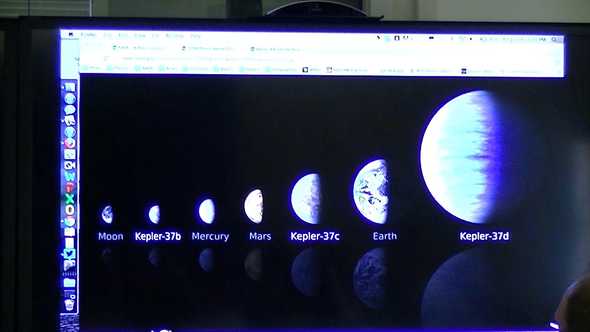Tom Barclay, Kepler Research Scientist
Tom Barclay is a Research Scientist at NASA Ames working on the Kepler mission. Kepler is trying to find other planets around the stars and answer the question of whether we are alone in the universe. The program is looking for other places that look like Earth. Even with recent problems with the spacecraft, there is a lot of data that has already revolutionized our understanding and will continue for another generation.
To find other planets, they look for a planet going around another star. As the planet crosses the face of that star, the brightness of the star dims. Looking at 150,000 stars continuously, the mission looks for these dips in brightness. How often these dips happen tell scientists how often the planet goes around the star. How dim the become tell scientists how big the planet is.
While we have an understanding that small planets can’t hold an atmosphere, larger planets have more gas, and what a nice temperature is where liquid water can exist, we don’t really know what can be habitable and what life is like elsewhere.
The scientists are interested in finding the smallest planets that can be discovered using Kepler. In a system called Kepler-37, they have found a planet bigger than Earth, named Kepler-37d, and another the same size as our moon, named Kepler-37b. Kepler-37b is smaller than any planet inside our solar system. The mission isn’t just showing us that we can find things like in our solar system, but that we can find smaller things in other solar systems. Planets are everywhere and are in many shapes and sizes.
What fascinates Barclay are the temperate worlds, Earth-sized planets with temperatures like Earth, but orbiting stars cooler than our Sun. They believe they have two or three planets meeting this criteria.
One of the limitations with the Kepler mission is that there are no beautiful pictures like Hubble takes. They create artist renditions that are not far from being a random guess. There is some science that is used, but it is very difficult to know what they look like. They don’t know if these planets have a magnetosphere or about the atmosphere. Future science missions to understand these planets will focus on the atmospheres.

